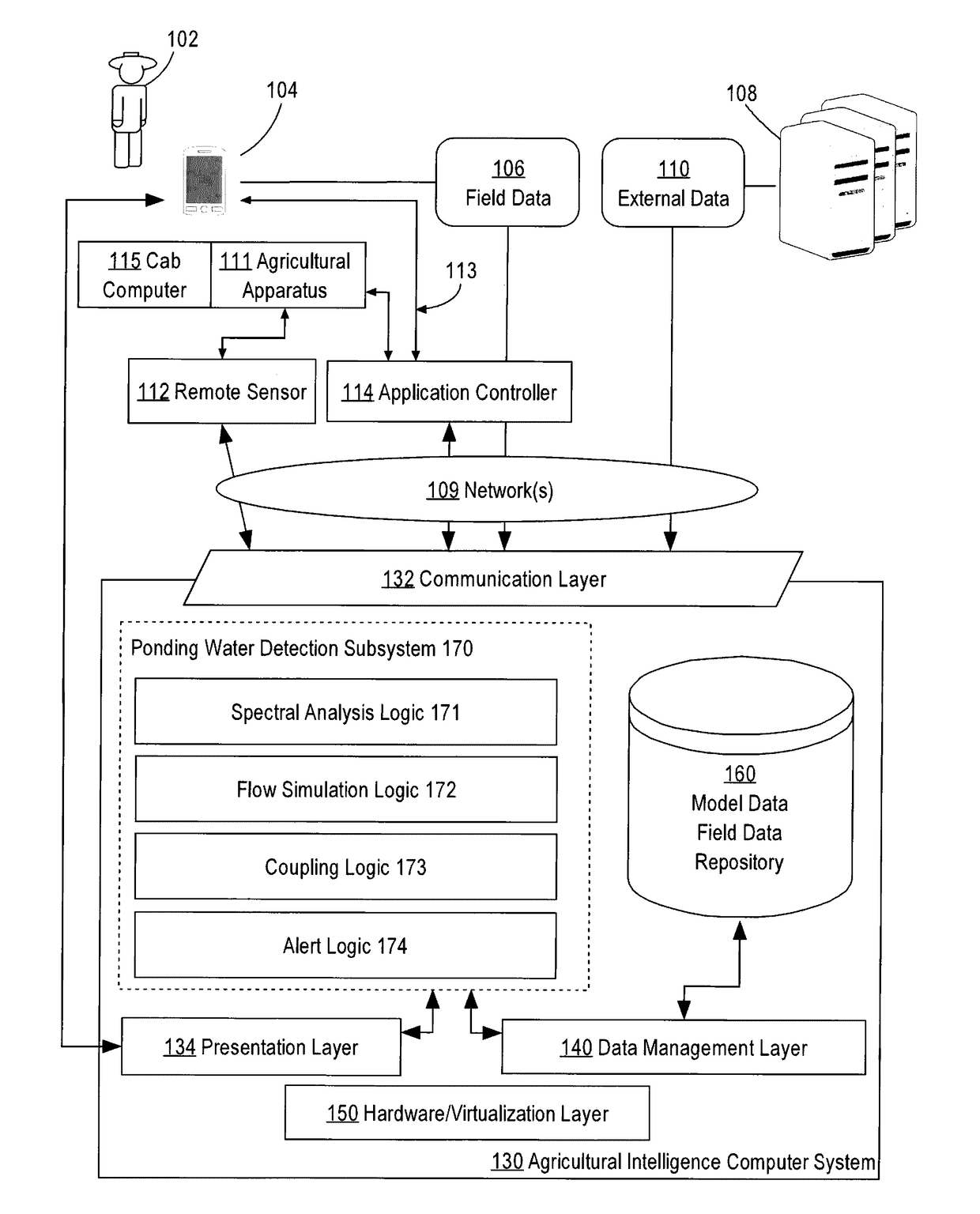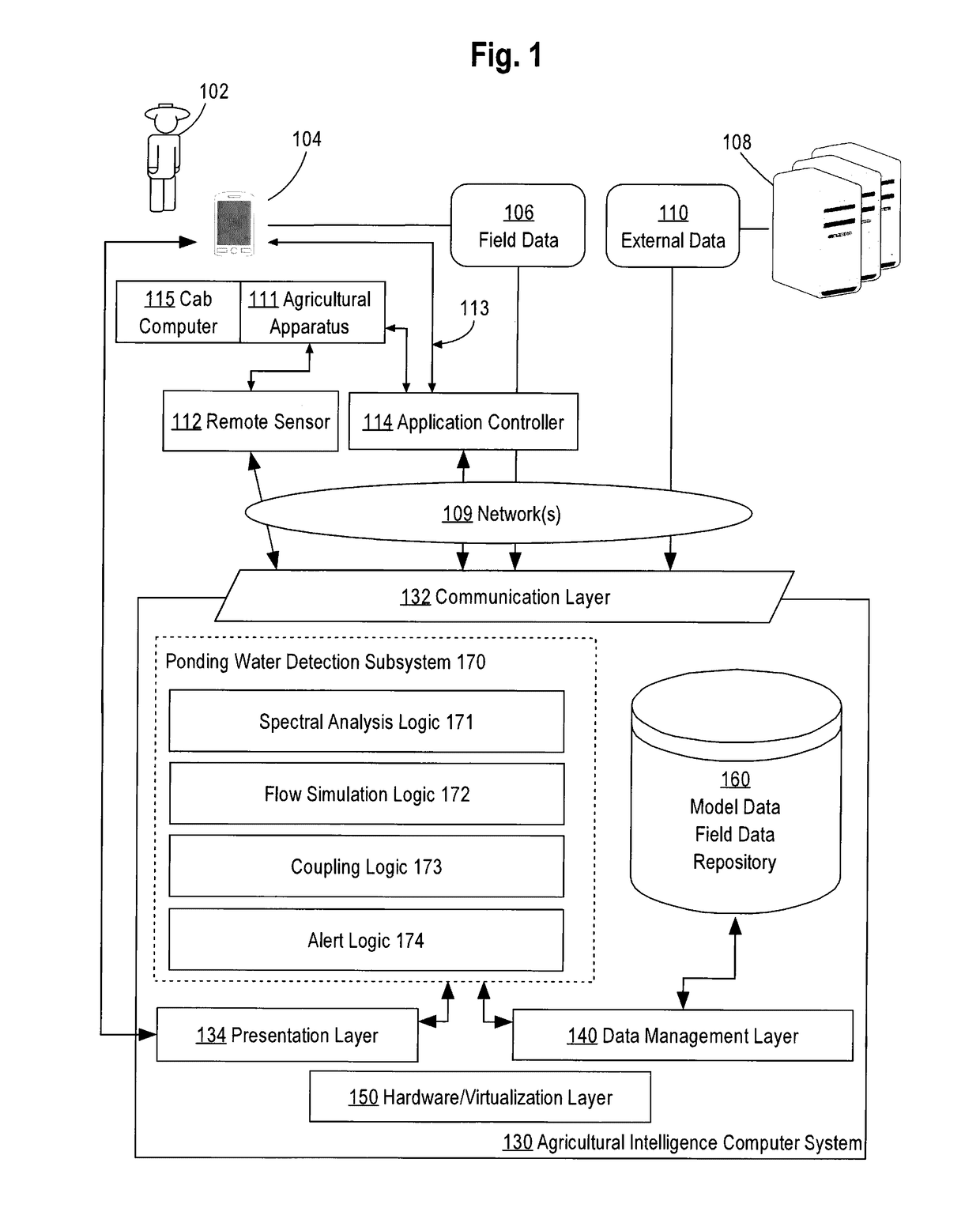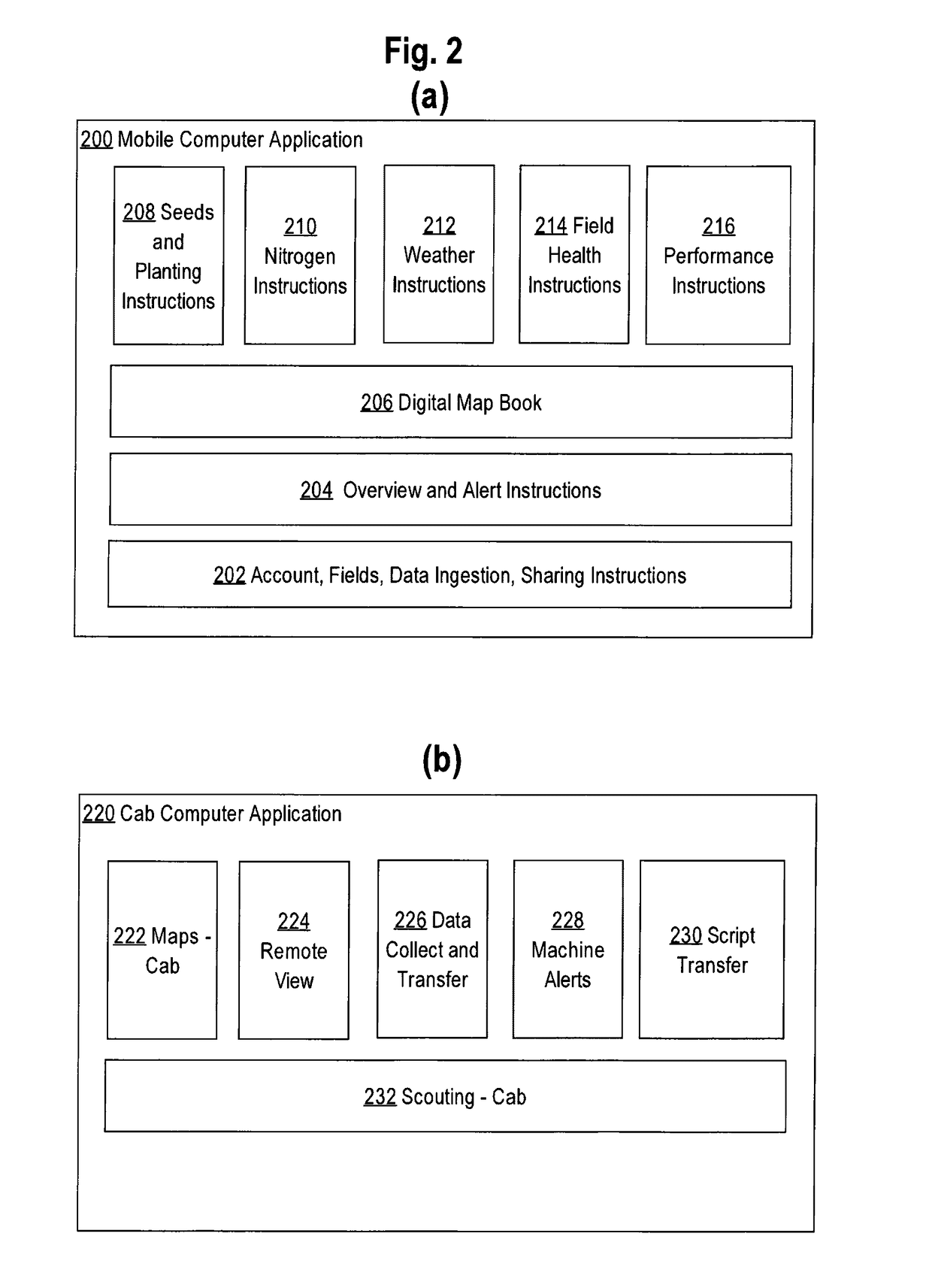Ponding water detection on satellite imagery
a satellite imagery and ponding technology, applied in scene recognition, television systems, instruments, etc., can solve the problems of severe damage or total loss, overwatering of crops, and water being extremely detrimental to the growth of certain crops
- Summary
- Abstract
- Description
- Claims
- Application Information
AI Technical Summary
Benefits of technology
Problems solved by technology
Method used
Image
Examples
Embodiment Construction
[0017]In the following description, for the purposes of explanation, numerous specific details are set forth in order to provide a thorough understanding of the present disclosure. It will be apparent, however, that embodiments may be practiced without these specific details. In other instances, well-known structures and devices are shown in block diagram form in order to avoid unnecessarily obscuring the present disclosure. The description is provided according to the following outline:[0018]1.0 General Overview[0019]2.0 Example Agricultural Intelligence Computer System[0020]2.1 Structural Overview[0021]2.2 Application Program Overview[0022]2.3 Data Ingest to the Computer System[0023]2.4 Process Overview—Agronomic Model Training[0024]2.5 Ponding Water Detection Subsystem[0025]2.6 Implementation Example—Hardware Overview[0026]3.0 Example System Inputs[0027]3.1 Remote Sensing Data[0028]3.2 Precipitation Data[0029]3.3 Elevation Data[0030]3.4 Soil Property Data[0031]3.5 Cropland Data[0...
PUM
 Login to View More
Login to View More Abstract
Description
Claims
Application Information
 Login to View More
Login to View More - R&D
- Intellectual Property
- Life Sciences
- Materials
- Tech Scout
- Unparalleled Data Quality
- Higher Quality Content
- 60% Fewer Hallucinations
Browse by: Latest US Patents, China's latest patents, Technical Efficacy Thesaurus, Application Domain, Technology Topic, Popular Technical Reports.
© 2025 PatSnap. All rights reserved.Legal|Privacy policy|Modern Slavery Act Transparency Statement|Sitemap|About US| Contact US: help@patsnap.com



